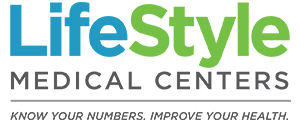Do you remember the low-fat and fat-free craze of the 90s? Did you stock your cabinets and fridges with low fat cookies and chips, and fat-free mayonnaise, cream cheese, and salad dressings? And did you spend many an evening at a froyo shop with a large bowl of fat-free frozen yogurt topped with fat-free gummy bears and sprinkles?
If you answered yes, you were not alone.
Our country was convinced that by simply cutting out the fat, we could shed that belly fat and reduce our risks for heart disease. Yet our nation’s waistlines continued to grow, as did the incidence of heart disease and type 2 diabetes. It turned out we were misguided. When food companies took out the fat, they replaced it with starches (refined carbohydrates which our bodies digest very rapidly, which can lead to spikes in blood sugar and more hunger) and trans fats (discussed below), causing more harm than good.
Do You Need to Eat Fat?
Yes, and you should get it from sources of unsaturated fat, also known as heart-healthy fats. Fat is important for normal body functions. It protects your organs, balances hormones, insulates and preserves body heat, provides fat-soluble vitamins (vitamins A, D, E, and K), and it acts as a source of energy for your body when you are exercising. So while you should eat enough heart healthy fats, you still need to eat them in moderation because they are very high in calories. Your Registered Dietitian can help you plan your meals with healthy eating tips such as how much fat you need each day, and how to fit it into your plan.
Not All Fats Are Created Equal
Unsaturated fats are heart healthy fats. You can find them in vegetable oils (like olive and canola oil), nuts, seeds, nut butters, avocado, olives, and fish.
Omega-3 fatty acids are a type of unsaturated fat that are very healthy. Omega-3 is found in walnuts, flaxseed, some oils, and fatty fish like salmon and tuna.
What Are the Unhealthy Fats?
Saturated fats are unhealthy for our hearts. They are found in butter, cream, whole milk, cheese, ice cream, fatty meats, poultry skins, bacon, sausage, coconut and palm oils. Saturated fats are solid at room temperature. They increase LDL (or bad cholesterol) and total cholesterol.
Trans fats are also harmful because they not only increase our LDL (bad cholesterol), but they also decrease HDL (good cholesterol). Read labels carefully. Even if the nutrition fact label says 0 grams trans fat, if there is “partially hydrogenated oil” in the ingredient label, you want to avoid it.
Putting it All Together
| Eat this… | Instead of this. |
| Vegetable oils (like olive and canola) | Butter |
| Tub margarines with no trans fats | Stick margarine |
| Grilled, baked, broiled foods | Fried foods |
| Nuts and seeds | Chips |
| Homemade whole grain baked goods low in saturated fats and free of trans fats | Baked goods with trans fats |
| Lean, unprocessed meat | Bacon and sausage |
Throughout all the food fads that have, and will, come and go, focusing on the simple basics will help keep you healthy: base your diet on fruits and vegetables, lean protein sources, whole grains, low fat dairy products, and heart healthy unsaturated fats. Want to know how to put that into practice? Come see us and we’ll show you how.

